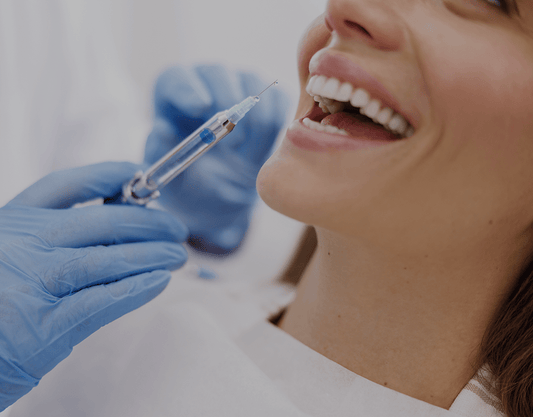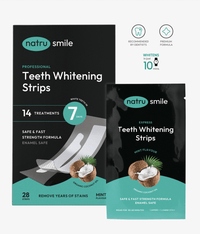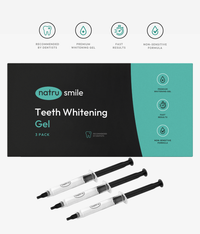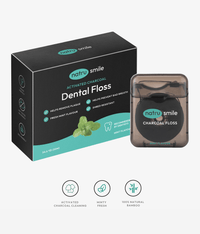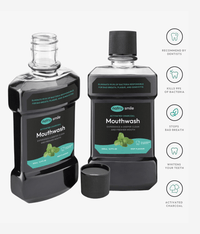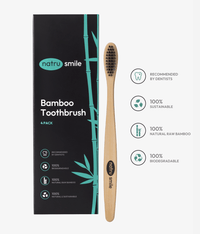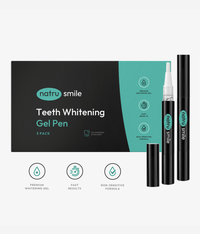
All products are certified by dental expert Dr. Greg Grillo
Teeth grinding, medically known as bruxism, is a prevalent issue affecting a substantial number of individuals while they sleep. This results in damage to their teeth, as well as leading to unpleasant symptoms such as headaches, tooth sensitivity, and facial pain. As dentists and medical professionals continue to seek out alternative treatments in addition to traditional approaches, Botox for teeth grinding has come to the forefront as a viable and effective solution for those who suffer from this common dental problem. This detailed article will dive into the use of Botox as a treatment for teeth grinding and clenching, discussing the process of how it works, and offering a comprehensive look at the various benefits and potential side effects that may come from pursuing this increasingly sought-after treatment option.
Understanding Teeth Grinding In Greater Detail
Before we explore Botox and its application in treating teeth grinding, it's essential to have a firm grasp on bruxism itself. Teeth grinding is characterized by the involuntary clenching or grinding of one's teeth, generally occurring while one is sleeping. This leads to a host of dental and oral health issues, including wearing down of the tooth enamel and cracked or broken teeth, as well as exacerbating underlying issues, such as temporomandibular joint (TMJ) disorders.
Botox: A Novel Approach To Treating Bruxism
With a solid understanding of teeth grinding in place, we will delve deeper into the use of Botox as a treatment for this dental affliction. Botox, a type of botulinum toxin, has been widely used for cosmetic purposes, such as treating wrinkles and fine lines on the face. However, its muscle-relaxing properties have made it an increasingly popular method to address teeth grinding and clenching as well.
The Science Behind Botox For Teeth Grinding: How Does It Work?
When it comes to teeth grinding, Botox works by relaxing the masseter muscle, which is the large muscle responsible for closing the jaw during chewing or grinding. By injecting small amounts of Botox directly into this muscle, it reduces its strength, thereby decreasing the force exerted on the teeth during grinding and clenching. In turn, this alleviates the damaging effects of bruxism and provides relief from associated symptoms.
Benefits And Potential Side Effects
As with any medical treatment, it's crucial to consider the benefits and potential side effects when deciding if Botox is an appropriate option for addressing teeth grinding. As a non-invasive treatment, many patients find the injection of Botox to be less intimidating than other interventions, such as dental splints or surgery. Additionally, it is usually a fast and simple procedure, lasting around 10-20 minutes, with results that are felt within a week and last up to several months.
However, potential side effects from Botox injections should also be taken into account. These may include localized swelling, bruising, discomfort at the injection site, headache, or, in rare cases, difficulty swallowing or breathing. It's essential to consult with a qualified healthcare professional to evaluate the risk factors and determine if Botox is an appropriate treatment option for managing teeth grinding.
By thoroughly exploring the use of Botox as a treatment for teeth grinding, weighing the pros and cons, and discussing with a medical professional, individuals suffering from bruxism make an informed decision about whether this innovative solution is the right choice for them.
What Is Botox For Grinding And Clenching?
Botox, or botulinum toxin, is a naturally occurring substance that has gained popularity in the field of cosmetic treatments for its use in wrinkle reduction and skin rejuvenation. While primarily known for its cosmetic applications, Botox has also been found to be an effective treatment for bruxism - the medical term for teeth grinding and clenching.
In this section, we'll take an in-depth look at how Botox works to treat bruxism, the procedure itself, and the potential benefits and side effects of using Botox for grinding and clenching.
Botox For Bruxism: How It Works
Botox works as a neuromodulator, interfering with the communication between nerves and muscles, which effectively weakens the targeted muscle. When it comes to treating bruxism, Botox is injected directly into the masseter muscle, a large muscle located in the jaw that plays a significant role in jaw movement.
By targeting the masseter muscle, the injected Botox essentially reduces its strength, limiting the force behind the clenching and grinding actions that are characteristic of bruxism. As a result, the symptoms associated with bruxism, such as jaw pain, headaches, and tooth damage, are generally alleviated over time.
The Botox Treatment Procedure For Grinding And Clenching
The process of utilizing Botox for treating bruxism typically involves a series of small injections directly into the masseter muscle. A healthcare professional who is experienced in Botox injections will determine the appropriate dosage and injection sites based on the patient's specific needs and symptoms.
The procedure is usually quick and involves minimal discomfort, often lasting only a few minutes. A local anesthetic may be applied to the injection site to optimize patient comfort.
Benefits And Potential Side Effects Of Botox For Grinding And Clenching
Botox treatment for bruxism provides numerous benefits for those suffering from teeth grinding and clenching. These benefits include:
- Reduction in jaw pain and discomfort
- Decreased risk of tooth damage due to weakened clenching and grinding forces
- Improved sleep quality as a result of reduced bruxism symptoms
- Prevention of further wear on teeth and dental restorations
While Botox is generally considered safe and has been approved for use in treating bruxism, it is important to be aware of potential side effects:
- Temporary bruising, redness, or swelling at the injection site
- Muscle weakness or stiffness around the jaw
- Difficulty chewing or speaking (in rare cases)
It is crucial to consult with a qualified healthcare professional before considering Botox for treating bruxism, to ensure a comprehensive understanding of the procedure, its benefits, and potential side effects.
Understanding The Mechanism Of Botulinum Toxin For Bruxism Treatment
Botulinum toxin, popularly known as Botox, has been widely used to treat a range of medical conditions and cosmetic concerns. In recent years, it has also emerged as an effective solution for managing bruxism, a disorder characterized by excessive teeth grinding and clenching. But, how exactly does Botox work to alleviate bruxism? Let's explore its mechanism of action in greater detail.
The Role Of Nerve Signals And Muscle Contractions In Bruxism
Our muscles, including those that control our jaw movement, work on the principle of nerve signal transmission. When we want to move our jaw, the nerves send a message to the targeted jaw muscles, which then contract so that the desired motion takes place. However, in individuals with bruxism, these muscle contractions occur involuntarily and with excessive force, resulting in grinding and clenching of teeth. This not only puts significant stress on the teeth but also impacts the surrounding oral structures.
How Botox Disrupts The Nerve-Muscle Connection
The primary mechanism of action of botulinum toxin is interrupting the transmission of nerve signals to the targeted muscles. When Botox is injected into a muscle, it temporarily paralyzes the muscle by blocking the release of a neurotransmitter called acetylcholine. This neurotransmitter is crucial for activating muscle contractions, so by inhibiting its release, Botox effectively prevents the muscle from contracting.
Botox Application In Bruxism Treatment
To treat bruxism using Botox, the toxin is strategically injected into the masseter muscle - which is one of the primary muscles responsible for jaw movement. By blocking the nerve signals to the masseter muscle, Botox weakens its contractions, thereby reducing grinding and clenching. The treatment helps lower the stress and harm caused to teeth and other oral structures, offering relief from bruxism symptoms.
The Temporary Nature Of Botox Treatment
It's important to note that the effects of Botox are temporary, typically lasting between three and six months. This means that patients seeking Botox treatment for bruxism may require periodic injections to maintain the benefits.
To recap: botulinum toxin serves as a valuable treatment option for bruxism by temporarily paralyzing the masseter muscle, mitigating the intensity of grinding and clenching, and protecting the teeth and surrounding oral structures from excessive stress and damage.
Side Effects Of Using Botulinum Toxin For Bruxism
While using Botulinum toxin, commonly known as Botox, as a treatment for teeth grinding, or bruxism, is generally considered to be safe and effective, it is essential to be aware of the potential side effects that may accompany the procedure. In most cases, these side effects are mild and temporary, resolving on their own after a short period. However, it's important to understand the risks involved and consult with a qualified medical professional before undergoing Botox treatment for bruxism to minimize the possibility of complications.
Common And Temporary Side Effects
Here is a list of frequently experienced side effects that, while possibly uncomfortable, are typically not a cause for concern and will likely dissipate with time:
-
Bruising, Swelling, Or Pain At The Injection Site: It's normal to experience some level of discomfort, bruising, or swelling at the site where the Botox injections were administered. These effects should diminish on their own within a few days.
-
Temporary Muscle Weakness Or Stiffness: Some people might notice a temporary reduction in muscle strength or flexibility near the treated area. This usually resolves within a few days to a week.
-
Headache: Headaches are a relatively common side effect of Botox injections, although they are generally mild and short-lived.
- Dry Mouth: You may experience a temporary sensation of dryness in your mouth after receiving Botox injections for bruxism.
Rare And Serious Side Effects
In some uncommon instances, more serious side effects arise, which require immediate medical attention. These may include:
-
Difficulty Swallowing, Speaking, Or Breathing: In very rare cases, Botox injections result in issues with swallowing, speaking, or breathing due to an unintentional spread of the toxin to nearby muscles. If you encounter any of these symptoms, contact your healthcare provider right away.
- Allergic Reactions: Although an allergic reaction to Botox is extremely rare, it's crucial to monitor for any signs, such as itching, rash, or swelling, and seek medical attention immediately if any of these signs are observed.
In conclusion, while Botox treatment for teeth grinding is widely considered to be safe, it's essential to be informed about the potential side effects and consult with a qualified medical professional before undergoing the procedure. By doing so, you minimize the risk of complications and ensure a more positive treatment experience.
Is Botox Treatment For Clenching And Grinding (Bruxism) Safe?
Botox is a treatment option that has gained popularity in recent years, but the question on most people's minds is whether Botox for bruxism is safe and effective. In this section, we'll explore the safety, efficacy, and various considerations to help you make an informed decision about this potential treatment option.
General Safety Considerations
In general, using Botox as a treatment for clenching and grinding (bruxism) is considered safe when administered by a qualified practitioner, such as a licensed medical doctor, dentist, or specialist in the field. Botox treatment is approved by the FDA for a wide range of medical applications, including as a treatment for muscle spasms, migraines, and excessive sweating, among other things.
Efficacy Of Botox For Bruxism
Scientific literature has provided support for the use of Botox in treating bruxism, highlighting its efficacy in reducing symptoms associated with the condition. Various studies have shown that Botox injections work by temporarily paralyzing the muscles responsible for bruxism, thus providing relief for the individual. Over time, Botox treatment may also help patients develop better habits to reduce the frequency of clenching and grinding even without further treatment.
Discussing Your Options And Potential Risks With A Professional
While Botox treatment for bruxism is generally considered safe for most individuals, it is crucial to talk with a healthcare professional before undergoing the treatment to determine if it is the best solution for you. Factors such as medical history, existing medical conditions, allergies, and personal preferences must be taken into account when deciding whether or not to choose Botox as a treatment option for bruxism.
Additionally, as with any medical treatment, there may be some risks associated with using Botox for bruxism. A skilled practitioner will be well-equipped to discuss these risks, manage any potential side effects, and ensure that the treatment is administered safely and effectively.
To ensure the best results and minimize any potential risks, it is essential to consult with a trained healthcare professional before deciding whether or not to pursue this treatment option for clenching and grinding.
How Long Does It Take For Jaw Botox To Start Taking Effect?
Jaw Botox is a popular treatment option for those seeking relief from chronic jaw pain, teeth grinding, or aesthetic concerns caused by an overly prominent masseter muscle. While it might seem tempting to expect instantaneous results, like with many other procedures, the timeline for Botox to take effect is not immediate. In this section, we'll provide a detailed breakdown of the time it takes for Jaw Botox to begin working, along with key milestones you should expect throughout the treatment period.
First and foremost, it's essential to understand that the effects of Botox are not immediate. The timeline for the onset of results varies slightly from person to person, but there is a general progression you should expect regarding when the Botox starts taking effect.
-
A Few Days After The Procedure: Within the first few days following Jaw Botox injections, some patients might notice a subtle shift in the tension or sensation around their jaw area. However, any changes experienced within this period may be minimal and not yet indicative of the full range of benefits to come.
-
1 To 2 Weeks Post-Treatment: Most patients start noticing a more significant reduction in jaw clenching and grinding within two weeks of treatment. During this time, Botox should have begun to effectively relax the targeted muscles, and you may also observe a decrease in jaw pain and stiffness.
- 1 Month Post-Treatment: By the one-month mark, the full effects of Jaw Botox should typically have taken hold. At this point, patients will often report substantial relief from pain, clenching, or grinding, and any aesthetic concerns such as a less prominent masseter muscle may also have been addressed.
It's important to note that individual experiences may differ, and some patients may require additional sessions or follow-up treatments to achieve their desired results. With a clearer understanding of how long it takes for Jaw Botox to start taking effect, you will manage your expectations better and plan your recovery journey accordingly.
How Long Does The Effect Of Botox Last In The Jaw Muscle?
Botox has become a popular treatment option for various cosmetic and medical concerns, including targeting the jaw muscles. If you're considering this treatment, you may be wondering how long the effects of Botox will last. In this section, we'll provide a thorough examination of the duration of Botox's effects on the jaw muscle, the factors influencing its longevity, and how subsequent treatments help maintain the desired outcome.
Duration Of Botox Effects In The Jaw Muscle
On average, the effects of Botox in the jaw muscle tend to last between three to six months. However, it's crucial to recognize that this duration varies depending on various individual factors, which we'll discuss in more detail below. Once the effects of Botox start wearing off, the treated muscle will gradually regain strength, and any earlier symptoms may slowly reappear. To maintain the results, additional Botox treatments may be required.
Factors Affecting The Longevity Of Botox Effects
Several factors influence how long the effects of Botox will last when injected into the jaw muscle. Here are some key elements to consider:
-
Dosage: The amount of Botox administered during the procedure affects the treatment's efficacy and duration significantly. Higher doses may result in a more extended period of muscle relaxation, while lower doses may lead to a shorter duration of effects.
-
Metabolism: Each person's body reacts to Botox differently. One of the variables that dictate this reaction is the individual's metabolism. People with a rapid metabolism may notice that the effects of Botox wear off sooner compared to those with a slower metabolic rate.
-
Muscle Strength: The strength and size of the jaw muscle being treated also play a role in the duration of the effects. Stronger and larger muscles may require higher doses of Botox to achieve the desired results and may experience a shorter duration of effects.
- Treatment Technique: The skill and experience of the healthcare professional administering the Botox injections and their technique also impact the treatment outcomes. Accurate injection placement and appropriate dosage adjustments are essential for achieving the desired results that last for the expected duration.
Maintaining Results With Subsequent Treatments
As the effects of Botox begin to wear off and jaw muscle strength returns, you may require follow-up treatments to maintain the desired outcome. Consult with your healthcare provider to develop a customized treatment plan that takes into account your individual needs and the factors affecting the efficacy and longevity of Botox injections in the jaw muscle.
The effects of Botox in the jaw muscle typically last between three to six months, with various individual factors influencing the treatment's longevity. Understanding these factors and working closely with your healthcare provider will help you develop an optimal plan for maintaining the desired results.
How Much Does Botox For Jaw Clenching Cost?
If you're interested in using Botox injections as a treatment for jaw clenching, it's essential to understand the cost implications involved. The price of Botox injections for this purpose varies considerably, depending on a variety of factors such as the practitioner's fees, the location of the clinic, and the number of units required for effective treatment. In this article, we will offer a thorough breakdown of these variables and discuss the average costs you should expect to incur for Botox treatment for jaw clenching.
Factors Affecting The Cost Of Botox For Jaw Clenching
There are multiple factors to consider when estimating the cost of Botox injections for jaw clenching. Some of the most impactful factors include:
-
Practitioner's Fees: The expertise and experience of the medical professional administering your Botox treatment will influence the cost. Highly experienced and well-established practitioners may charge higher rates than less experienced or newer professionals in the field.
-
Location of the Clinic: The region or city where the clinic is located also substantially impacts the overall cost of your Botox treatment. Clinics in urban centers or more affluent regions may charge higher prices than clinics in smaller towns or rural areas.
- Number of Units Required: The severity of your jaw clenching and the size of the muscles being treated will determine the number of Botox units necessary for effective treatment. The more units needed, the higher the overall cost of your treatment.
Average Cost Of Botox For Jaw Clenching
Considering these factors, on average, patients usually pay between $500 and $1,500 per treatment for Botox injections for jaw clenching. This is a wide range, so it's crucial to consult with a qualified medical professional to evaluate your specific needs and determine the appropriate dosage. Additionally, this consultation will allow you to obtain a personalized, accurate estimate of the treatment cost tailored to your circumstances.
Various factors influence the cost of Botox injections for jaw clenching, and it's essential to research thoroughly and consult with a medical professional before embarking on this treatment option. By being informed about the costs involved, determining the right treatment plan, and finding a reputable professional, you will achieve effective and satisfactory results for your jaw-clenching concerns.
Other Benefits Of Getting A Botox Injection In The Masseter Muscle
Botox injections in the masseter muscle have become an increasingly popular method to address various dental and aesthetic concerns. While the primary benefit is often associated with alleviating teeth grinding (bruxism) and clenching (bracing), Botox treatments in the masseter muscle provide a range of additional advantages:
Relieve Jaw Tension
One of the key benefits of Botox injections in the masseter muscle is the significant relief of jaw tension. Millions of people experience pain and discomfort caused by persistent clenching or grinding, and Botox helps effectively relax the jaw muscles. As a result, patients often report a more comfortable and relaxed jaw following treatment.
Balance The Face
In some cases, an overly developed masseter muscle causes facial asymmetry, making the jawline appear more prominent on one side. Botox injections are precisely administered to target the specific overdeveloped areas of the masseter muscle, helping to create a more balanced and harmonious facial appearance.
Slim The Appearance Of A Wide Jaw
For individuals who have a naturally wide or square-shaped jaw, Botox treatments in the masseter muscle have a subtle slimming effect. By carefully weakening and relaxing the masseter muscle, the jawline becomes less prominent, resulting in a softer, more slender facial profile. This aesthetic enhancement often boosts patients' confidence in their appearance.
Eliminate Headaches That Originate From The Jaw Area
A significant number of individuals who grind or clench their teeth suffer from tension headaches originating from the jaw area. These headaches are often severe and persistent, negatively impacting daily life. Botox injections in the masseter muscle help address the primary cause of these headaches - the overactive masseter muscle - by relaxing and weakening it. Consequently, many patients experience a reduction or complete elimination of jaw-related tension headaches following treatment.
Why Choose Botox To Stop Teeth Grinding?
Teeth grinding, or bruxism, is a common dental issue that leads to discomfort, tooth damage, and other complications. Traditional treatment methods, such as mouthguards, provide some relief, but may not address the root cause of teeth grinding. This is where Botox comes in as an innovative and increasingly popular treatment option for bruxism. In this section, we'll discuss the benefits of choosing Botox for teeth grinding and explore how the procedure works to alleviate symptoms.
The Advantages Of Botox For Bruxism Treatment
There are several reasons why a growing number of dental professionals and patients are choosing Botox to treat teeth grinding:
-
Targeting The Root Cause: Unlike mouthguards and other traditional treatments, Botox directly targets the source of teeth grinding by weakening the contractions of the masseter muscle. This approach helps to alleviate excessive pressure on the teeth and jaw joints, thus reducing the likelihood of tooth damage and associated symptoms.
-
Minimally Invasive Procedure: Botox injections are relatively non-invasive, which makes them an attractive option for those who may be hesitant to undergo more extensive dental procedures. The treatment involves the administration of precise doses of Botulinum toxin into the masseter muscle, and the entire process is often completed within about 15-30 minutes, depending on the patient's needs.
-
Quick And Effective Results: Many patients experience noticeable improvements in their bruxism symptoms within just a few days to two weeks following a Botox treatment. Depending on the severity and frequency of teeth grinding, the results last for up to six months, after which maintenance treatments are scheduled as needed.
- Alleviation Of Associated Symptoms: By reducing the masseter muscle's contractions, Botox also helps alleviate other symptoms related to teeth grinding, such as headaches, facial pain, and jaw discomfort.
By directly addressing the root cause of teeth grinding, Botox provides lasting improvements in dental health and overall well-being for patients who suffer from this common dental issue.
Weighing The Benefits And Risks
Botox injections for teeth grinding carry several advantages, such as being a non-invasive procedure, offering fast results, and having relatively few side effects. However, there are a few factors patients should consider when deciding if Botox is the best option for them. These factors include the potential for temporary side effects (ranging from pain at the injection site to headaches and changes in facial appearance), the cost of the treatment, and the need for repeat injections as the effects of Botox tend to wear off over time.
We strongly encourage individuals considering Botox for their teeth grinding issues to thoroughly research the procedure, discuss their situation candidly with a qualified professional, and weigh the potential risks and benefits before making a decision.
Will Botox For Bruxism Change My Face?
One common concern among individuals considering Botox injections as a treatment for bruxism is whether or not the procedure will cause noticeable changes to their facial appearance. In this section, we'll address those concerns and explain the potential impact Botox has on your face when used to treat teeth grinding.
Botox And Facial Changes: What To Expect
In the majority of cases, patients who undergo Botox injections specifically for bruxism should not expect a significant alteration in their facial appearance. The purpose of Botox in this context is to relax and reduce the activity of the masseter muscle—the muscle responsible for jaw clenching and grinding—to alleviate the symptoms associated with bruxism.
However, some patients may observe a few subtle changes following their treatment. For instance, a slight slimming effect may become apparent along the jawline, resulting in a more refined facial contour. This is due to the weakened masseter muscle, which causes a reduction in muscle bulk.
Additionally, as the masseter muscle is relaxed, it may lead to improved facial balance and harmony, which are generally considered positive and desirable outcomes. These aesthetic improvements often serve as added benefits for those who are pursuing Botox treatments primarily for bruxism relief.
In summary, while Botox injections for bruxism are not typically associated with major changes to a patient's facial appearance, some subtle improvements may be observed. Most of these changes are considered beneficial, and many patients appreciate the dual advantage of addressing their bruxism symptoms while also enhancing their facial aesthetics.
How Can I Permanently Fix My Teeth Grinding?
Teeth grinding, also known as bruxism, is a common dental problem that many people face. While Botox may provide some temporary alleviation from teeth grinding, this treatment is not a definitive solution to the issue. If you're looking for a more lasting approach to address the root causes of bruxism, it is crucial to consult with a qualified dentist or healthcare professional who develops a tailor-made, long-term treatment plan based on your unique circumstances. In this section, we will discuss several possible components of a comprehensive treatment plan, including dental appliances, medication, and various therapeutic interventions.
Dental Appliances
Dental appliances such as mouthguards or splints are often recommended to protect your teeth from the damaging effects of grinding. These devices are custom-made to fit your mouth comfortably, and they help reduce the impact of grinding on your teeth, alleviate pain, and lower the risk of associated dental problems.
Medication
In some cases, medication may be prescribed to address the underlying factors contributing to teeth grinding. For instance, muscle relaxants help reduce muscle tension that may lead to grinding, while antidepressants or anti-anxiety drugs address issues related to stress or anxiety that may be causing your bruxism.
Therapies
Various therapeutic approaches may also be employed as part of a comprehensive treatment plan to help you manage and permanently overcome teeth grinding. These may include:
- Cognitive-Behavioral Therapy (CBT): A type of psychotherapy, CBT helps you identify and change thought patterns and behaviors that contribute to bruxism.
- Stress Management: Learning effective strategies for coping with stress significantly reduces the frequency and severity of teeth grinding.
- Relaxation Techniques: Practicing relaxation techniques such as deep breathing, progressive muscle relaxation, or meditation helps lower tension and decrease the likelihood of teeth grinding.
By working closely with a dental professional or healthcare provider, you will receive personalized guidance on addressing teeth grinding permanently. Through a combination of dental appliances, medication, and therapeutic interventions, it is possible to find lasting relief from bruxism and maintain the overall health of your teeth.
Is Botox For Teeth Grinding Covered By Insurance?
The answer is not a simple yes or no, as coverage for Botox treatment for teeth grinding varies significantly among different insurance providers and individual plans. In some instances, Botox may be considered a medically necessary treatment option for bruxism, which makes it eligible for coverage by insurance. However, this typically depends on the severity of your teeth grinding, as well as any associated symptoms and potential risks to your oral health.
What Factors Influence Insurance Coverage For Botox For Teeth Grinding?
Several factors influence whether or not your insurance provider offers coverage for Botox treatments for teeth grinding:
-
Severity Of Bruxism: If your teeth grinding is severe and has led to damage or the potential for damage to your teeth, jaw, or overall oral health, your insurance provider may be more likely to approve coverage.
-
Alternative Treatments: Some insurance providers may only cover Botox for teeth grinding if other treatment options have been tried and deemed unsuccessful or if you have contraindications to standard treatments.
- Dental Vs. Medical Coverage: Depending on your insurance plan, Botox for teeth grinding may fall under dental or medical coverage. It's essential to familiarize yourself with the specifics of your plan to understand how Botox treatment might be covered.
Steps To Determine Your Eligibility For Botox For Teeth Grinding Coverage
To determine if your insurance will cover Botox injections for teeth grinding, it's crucial to follow these steps:
-
Contact Your Insurance Provider: Speak directly with a representative from your insurance company to obtain information about coverage options for Botox for bruxism. They will clarify whether your specific plan provides coverage and outline any criteria you must meet to qualify.
-
Review Your Policy: Obtain a copy of your insurance policy and read through the sections that pertain to dental and medical coverage. This will give you a better understanding of what kinds of treatments may be covered.
- Consult With Your Healthcare Provider: Talk to your dentist or primary care doctor about your teeth grinding and the possibility of Botox injections as a treatment option. They will help you assess the severity of your condition and determine if Botox is a suitable choice for you. Additionally, they may need to provide documentation to support the medical necessity of Botox treatment for your bruxism.
In summary, coverage for Botox treatment for teeth grinding varies among insurance providers and individual plans. To determine if your insurance may cover this type of treatment, it's essential to contact your insurance provider, review your policy, and consult with your healthcare provider about the medical necessity of Botox injections for teeth grinding. If you use Medicare, you may also want to consult their guidelines so you ask informed questions.
Does Botox For Teeth Grinding Hurt?
Many patients wonder if the use of Botox to treat teeth grinding, or bruxism, is a painful procedure. The consensus is that most individuals experience only minimal discomfort during Botox injections for teeth grinding. To better understand why the level of pain is often quite manageable, let's explore the treatment process in more depth.
The Injection Process And Pain Management Techniques
The needles utilized in Botox injections for bruxism are extremely fine, resulting in less discomfort during the injection process. In addition to the small size of the needles, a topical numbing agent may be administered to the injection sites, further diminishing any potential pain or soreness.
Botox is typically injected into the masseter muscle, which is responsible for the clenching and grinding of teeth. Though individual experiences may vary, any pain that patients report is generally brief and easily managed.
Additional Benefits Of Botox For Teeth Grinding
Beyond the primary function of alleviating symptoms of bruxism, Botox injections targeting the masseter muscle offer several additional benefits. These include face slimming and improved facial balance, resulting from the muscle's decreased activity after the Botox treatment.
Consult With A Qualified Professional
Botox for teeth grinding is an effective and increasingly popular treatment option. Despite being considered a minimally invasive procedure, it is crucial to consult with a qualified healthcare professional to ensure that the treatment is safe and appropriate for your specific needs. This will not only reduce potential risks and complications but also ensure that the procedure is as comfortable as possible.
Takeaways
Grinding teeth is a difficult problem to treat, but Botox has been successfully used as an effective treatment. Botox is injected into the jaw muscles and works by temporarily weakening them to reduce the force of grinding. It also helps relax facial muscles that may be contributing to the problem, resulting in less strain on the teeth and jaw joints. Treatment with Botox generally takes about 10 minutes and results are usually seen within two weeks after injection. However, it should be noted that since this type of treatment is not permanent, it will need to be repeated periodically for it to remain effective over time.

